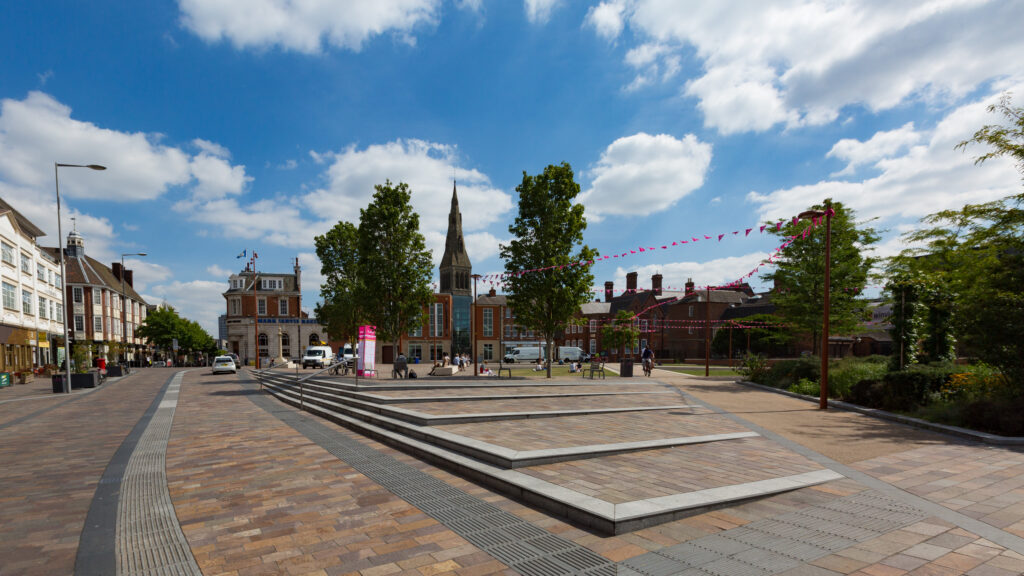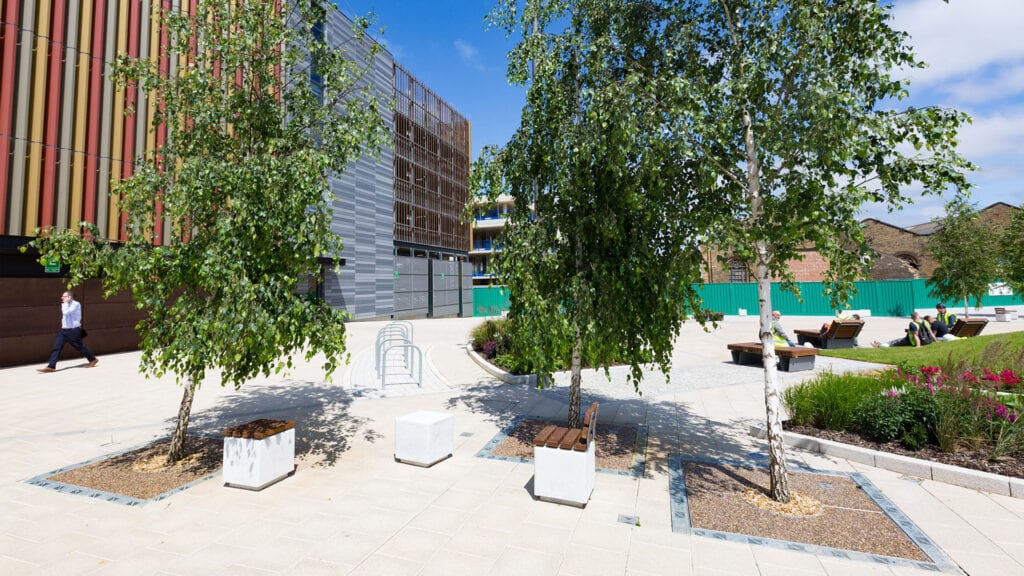GreenBlue is overjoyed when councils present a resilient GI Policy / Strategy; even more so when we see the inclusion of “blue” too, but how do these policies reinforce resilient planning/designing of our towns and cities.
What is green and blue infrastructure?
Green and blue infrastructure is the combination of green space and stormwater management that is essential to the quality of our lives and ecosystems. It is referred to as ‘infrastructure’ as in our opinion, it is equally important as other forms of infrastructure such as transport, utilities, and educational and healthcare facilities. It is taken to mean all green space and waterbodies or watercourses of public and natural importance.
- Policy/Strategy will often detail how it defines these spaces as below: –
- Parks and gardens – including urban parks, country parks and formal gardens.
- Amenity greenspace (most commonly, but not exclusively in residential areas) – including informal recreation spaces, greenspaces in and around housing, domestic gardens, and village greens.
- Outdoor sports space (with natural or artificial surfaces and either publicly or privately owned) – including pitches for football, cricket, rugby, tennis courts, bowling greens, golf courses, school, and other institutional playing fields.
- Natural and semi-natural greenspaces – including woodlands, scrub, grasslands, wetlands, open and running water and rock areas.
- Green corridors – including river corridors, river and canal banks, cycleways/bridleways, and rights of way.
- Allotments and community gardens.
- Cemeteries and churchyards.
- The wider countryside.
Upon identifying key BGI areas within our towns, boroughs, and cities it is important to document the current situation, and what needs to be done to improve and maintain for all those that work, live, and play within. Therefore;

What is the purpose of a green and blue strategy?
A well-written strategy will provide increased awareness of the existing greenspace and encourage investment in these areas and, above all, deliver the maximum potential benefits to the user, environment, and the stakeholder. Green and Blue Infrastructure Strategies should encourage collaboration across several local authority or municipality departments, with particular focus being on those within transport, highways, drainage/flooding and green space (Parks, Gardens and so-called “green corridors.”)
A contributing factor for a successful strategy will entail early and ongoing community engagement: proposed changes to Local Plans will require forums for feedback, be it in person or digital, giving clear explanations to different personas, with responses to be published and measured. Furthermore, additional details within good Supplementary Planning Documents (SPD) provide guidance to developers, partners and decision-makers on the future provision of green and blue infrastructure, and assist in more rapid granting of planning permission for new developments.

What Legislation?
When compiling such strategies it’s important, as always, to refer to National Guidelines that contribute to delivering green and blue infrastructure. A previous blog Stormwater made Simple highlighted Legislation relating to SuDS/LID on a global scale that also included a handy downloadable glossary.
Particular attention to the Flood and Water Management Act, 2010, National Planning Policy Framework (NPPF) 2012, Planning Practice Guidance (PPG) – Natural Environment (2016) and the Natural Environment and Rural Communities Act (NERC) 2006.
How can planning support resilience?
We have emphasised that evolving Local Plans play an important role in securing, protecting and enhancing open space to incorporate green and blue infrastructure. Planners should first ensure developments are well placed and enhance the natural features of the site. Ultimately planners and decision-makers need to consider the following: –
- Ensure the protection of green space and development from risk of flooding
- The protection of existing habitats and biodiverse wildlife
- The inclusion of habitats for biodiversity on any new developments considering both green and blue infrastructure.
- Quality of use – building back better to engage with a range of users and to look ahead to accommodate both climate and population changes.
- Consider amenity – a well-designed place should consider history and aesthetics of location.
- Ensure ongoing communication and collaboration with developers and contractors to ensure quality design is adhered to, implemented and maintained for the long term.

From GBU’s perspective we need to encourage long term urban green infrastructure and easily maintained blue holistically for the countless benefits they both bring.
This is easily achieved by planting well from the outset: GreenBlue’s ArborSystem is the only fully compatible Tree Pit system. The incorporation of blue is simple; our SuDs tree pits are flourishing, (we have the proof) and bioretention raingardens are proving a huge success on new developments and even retrofit schemes.
With our upcoming 30 years as the leading industry expert on all things, Green and Blue to now include Smart Space and Air – we are delighted to announce upcoming events in both Manchester and London. Where we will bring together a host of speakers and innovative solutions. Discover more

